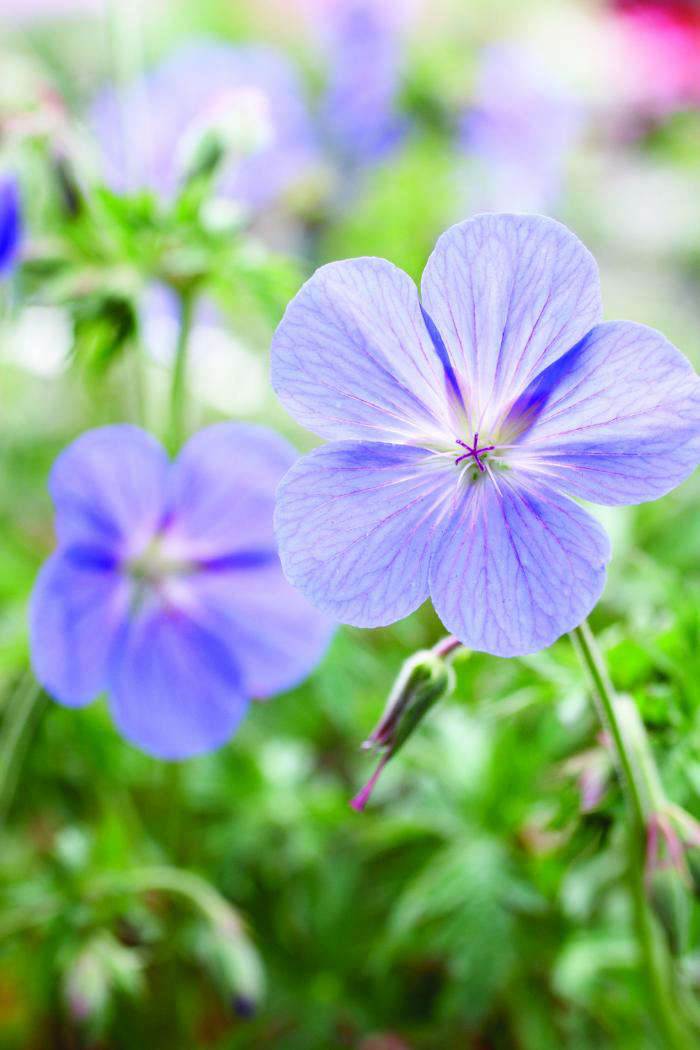Every gardener has a problem. Yours may be a deep pool of shade where nothing blooms. Or a slope that washes away after every heavy rain. Or an old oak tree with roots that have spread, like varicose veins. Mine is deer.
At night, I lie awake and imagine I hear incessant chomping. After they finish off the roses, what will the deer do next—send out for pizza?
“I’m a little obsessed,” I admitted to Kathleen Brenzel, the editor of The New Sunset Western Garden Book, the encyclopedic ninth edition of a guide that gardeners in the western United States have revered since its earliest incarnation as a pamphlet, in 1932.
“If deer are eating everything you own, try something they don’t like,” Brenzel said. “There are some suggestions in the book.”
So there are. In fact, in addition to a list of nearly 250 plants deer dislike to eat, Sunset’s 768-page edition devotes a full 30 pages to plants that solve a variety of specific problems in the garden. They’re not the latest hybrids, but rather basic plants that are useful in temperate climates to both novices (who may find them new) and to experienced gardeners (who may be happy for any distraction from that insatiable chomping sound). Here are some old friends Sunset recommends.
Magnolias

Thwart the deer. It is a truly bizarre thing about deer that they shy from eating magnolias, because the buds on Magnolia x. soulangeana look delicious even to me.
Lady’s Mantle

Brighten a shady spot. Alchemilla has a nice lobed leaf, forms compact mounds, and sends out stalks of yellow blooms that are “attractive as a frothy mass,” according to Sunset.
Hostas

Cover a shady corner without spending a fortune. Clumps of Hosta will send up spikes of flowers each summer and spread quickly; split the roots with a sharp spade to double the coverage.
Shrub Roses

Other flowers come and go; a shrub like Rosa ‘Molineux’ has a long blooming season and is disease-resistant; $27.95 at David Austin Roses.
Heliotrope

Avoid costly annuals with a perfumed perennial. Although a mature Heliotropium arborescens may achieve a height of 4 feet, according to Sunset, heliotrope’s greatest value is as a fragrant bedding plant.
Boxwood

Even if the rest of your garden has clumps of everything you love plopped willy-nilly in the dirt next to each other, a boxwood hedge will lend an instant air of order and propriety.
Snowberry

Above: Stop erosion on a slope. Snowberry will grow happily on a steep hillside and will flower in spring or early summer.
Cranesbill

Consider a ground cover that won’t gobble up space. Such cranesbills as Johnson’s Blue will spread via rhizomes through the garden, but always politely.
Periwinkle

Cover a bare spot under a tree. Periwinkle will thrive where lesser ground covers fail. Don’t waste it on a sunny spot; turn it loose in shade under that old oak in the corner of the backyard. As a ground cover, Vinca minor is typically sold in bulk.
Privets

Withstand wind. Privet doesn’t get enough credit. Although often dismissed as a common hedge shrub, it also deserves credit for its ability to protect more tender garden plants from being damaged by high winds.

For more plants to solve problems in the garden, see:
- Garden Design 101: Guide to Shrubs.
- Flowering Magnolias: 7 Favorite Trees to Plant.
- Field Guide: Privet.
N.B.: This is an update of a post originally published March 28, 2012.










Have a Question or Comment About This Post?
Join the conversation